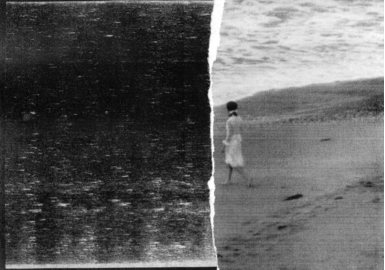
‘Hiroshi Teshigahara was only incidentally a filmmaker. For decades recognized for his work in various classical Japanese art forms, he was a master and a modern trailblazer all at once. Son of the founder and grand master (Iemoto) of the Sogetsu School of Ikebana (more moribundly known as flower-arranging), he turned to film as an extension of his aesthetic explorations in other media. A graduate of the Tokyo National University of Fine Arts and Music, he was a painter and sculptor, designed gardens and tea rooms, directed operas and Noh plays for the stage. And he made 21 films, most of them short documentaries on subjects as varied as Hokusai and Hispanic boxers. But he is widely known only for the eight feature-length films he made over a period of 30 years, films as unique in form and function as anything else in his creative life—except that they use the most immediate and direct medium for the communication of ideas in the same arresting way.
‘Always within close reach of the avant-garde, one of whom he of course counted himself, Teshigahara had shown canny judgement in his choice of collaborators when he turned to feature films in 1962. The writer Kobo Abe (1924–1993) had been sending shivers of recognition down the spines of Japanese literati ever since he had won the famed Akutagawa Prize for his novel The Crime of S. Karuma in 1951. His masterpiece, The Woman in the Dunes, was published in 1960 and won the Yomiuri Prize. Teshigahara longed to film it, but decided, for his first feature effort, to film an original script that Abe had prepared called The Pitfall.
‘Also accompanying Teshigahara in his first production was a close friend named Toru Takemitsu (1930–1996). They had collaborated once before, in 1959, on a short film about the boxer Jose Torres. Takemitsu, who loved film and preferred writing film scores to composing concert works, would quickly become the most sought after and certainly the most brilliant modernist Japanese composer. While writing music for all of Teshigahara’s subsequent films, he would also work closely with virtually every notable Japanese filmmaker of the 1960s, including Masaki Kobayashi, Masahiro Shinoda and Nagisa Oshima. And he would later compose the score for Akira Kurosawa’s formidable Ran (1985).
‘The Pitfall (Otoshiana, 1962) is nominally concerned with a series of unexplained murders in a poor mining community (hence, the title’s double entendre). The murders are perpetrated by a man wearing sunglasses, dressed in an immaculate white suit and hat. His victims reappear throughout the film in intact physical form (no special effects here, so much the better), and observe the action like a mute and ineffectual Greek chorus, asking, “Why was I killed? What was it for? Where was the meaning in my life?”—to which they get no response.
‘Described by Teshigahara as a documentary–fantasy, the film is all the more unsettling for its matter-of-fact illogic. Typical of Abe’s other works, The Pitfall also employs a pulp-fiction framework—a ghost story—but only to throw into relief both our preconceptions of the genre and the underlying truths that it unearths (in this case, literally). Antonioni had already exploited a similar approach in L’avventura (1960), which spends much of its time engaged in a futile search for a missing person. For his efforts with The Pitfall, Teshigahara won the NHK Best New Director award and the film earned the rare honor—for a novice director—of being released abroad. Vernon Young said of it:
‘Teshigahara’s The Case [an alternate release title] may be thought to exhibit the oblique time-sense of Alain Resnais and a form of moral relativism fetched from Kafka and French existentialism, yet what is more Japanese than a palpable ghost? And the landscape depicted is indelibly of the Japanese persuasion, as clean as a pebble garden or a print by Hiroshige.
‘Perhaps the most famous postmodern tale of a person who went missing is Abe’s The Woman in the Dunes, which Teshigahara took on for his next project, once again with Abe writing the script. It is the story of Jumpei Niki, an entomologist and family man who innocently seeks shelter for the night in a remote village situated among ever-encroaching sand dunes. What Niki finds there is so fraught with implications about the human predicament, and written with such obsessive detail, that few people believed anyone could pull it off as a film. That Teshigahara does, with moviegoers worldwide leaving theaters brushing imaginary sand from their clothing, attests to his genius at finding the most vivid equivalents to Abe’s odd universe of words. And Teshigahara’s success with actors (his wife was the film actress Toshiko Kobayashi) was never more obvious, as Eiji Okada and Keiko Kishida become veritable epitomes in their roles, at first resisting and then relenting to the cruel dictates of the village and the pit in which they find themselves together and from which they can never escape. “Both Okada and Kishida got into their roles so deeply,” Teshigahara later wrote, “that the look on their faces changed during the four-month shooting.” Teshigahara’s wonderful abstract compositions of sand dunes constantly shifting bestow on geology an alarming presence.
‘The film was originally 147 minutes, but when Teshigahara was invited to bring his film to the Cannes Festival, he cut it to 124 minutes. Although the cuts do no harm to continuity, and actually make the film seem tighter, it is easy to miss the deleted 23 minutes, since the world that Teshigahara made so palpably real is yet harder to leave at the film’s conclusion.
‘The Woman in the Dunes (Suna no Onna , 1964) won the Special Jury Prize at Cannes, and it was nominated for the Best Foreign Film Award by the American Academy. It became Teshigahara’s most highly praised and best-known film, which is just as well. Although he would make two more films with Kobo Abe, The Face of Another (Tanin no Kao , 1966) and The Man Without a Map (Moetsukita Chizu, 1968), both of them based on a published Abe novel, neither was as successful as adaptations or as compelling as films. Abe’s abstractions seemed to expand exponentially with each new book. Their increasingly hermetic ideas, pushing meaning to impenetrable extremes, drew progressively narrower interest from readers. And although Teshigahara, equal to the challenge, would often find splendid cinematic solutions to Abe’s prose (doubtless with the author’s considerable help), one could argue that, because of his obdurate devotion, Teshigahara’s work followed Abe’s into obscurity.
‘The Face of Another is ‘about’ the mysteries of identity and how it is shaped by one’s relation to others. It is also part horror, part science-fiction film, with unavoidable ties to Frankenstein (both the book and the movie), Mad Love (Karl Freund, 1934) and The Beast With Five Fingers (Robert Florey, 1946), which were ‘about’ the perils of interchangeable body parts and the chaos they can lead to.
‘The big difference in Teshigahara’s film is that he isn’t trying to be campy. The film’s fascination derives from its belief in its own ideas and Teshigahara’s unerring poise in his constructing the bizarre but utterly convincing world where a man named Okuyama tries to reconstruct his life after a lab explosion leaves him without a face. Forced to encase his head with bandages (which are functional and cleverly cut to allow the actor underneath [the splendid Tatsuya Nakadai] to look as if he is frowning and smiling at the same time), he watches with dismay as everyone—even his wife (played by the eternally exquisite Machiko Kyo) behave differently, coldly, toward him. A subplot is introduced involving a young woman who works as a nurse in a military mental hospital. Otherwise pretty, the young woman bears terrible scars on the right side of her face from the war (“No full explanation was given, but the name ‘Hiroshima’ was constantly repeated in the following dialogue.” . But unlike Okuyama, she makes no attempt to hide her face, and deals with people’s predictable reactions with a stoical grace.
‘Whether it was because of slow pacing, the almost psychotic mental state of Okuyama, or its failure to fulfill audience expectations of a horror film, The Face of Another was met with mostly unpleasant surprise. Again, Vernon Young had to comment: “The result is somewhat antiseptic; it has the attraction of a nude you might appreciate without desiring.” Takemitsu composed a beautiful waltz for the credit sequence and a cabaret song introduced in a bar scene (in which Takemitsu himself is seen sitting in the crowd—according to Oshima, he looked like Jean-Louis Barrault with diarrhea). Notwithstanding respectful reservations, The Face of Another is an indelibly powerful film that never found its audience.
‘Teshigahara’s fourth and last adaptation from Abe was The Man Without a Map. For the first time Teshigahara sought the backing of a major Japanese studio, ShinToho. Consequently the film was in color and wide screen. Whether or not these were Teshigahara’s choices, the film sometimes seems unsure what to do with the wider frame. And Shintaro Katsu—infamous for his Zatoichi, Blind Swordsman series (26 installments as of this writing)—is an odd choice for the lead role.
‘Also for the first time, Teshigahara’s film suffers in comparison with Abe’s novel. The private detective hired by a woman whose husband has gone missing is a rather unprepossessing intellectual narrator in the novel. Perhaps out of deference to Shintaro Katsu, the narration is dispensed with in the film, with the detective portrayed as a more conventional, hard-as-nails type, which diminishes sympathy for him and emphasizes the absence of any real ‘action’.
‘Not knowing if Teshigahara sensed this, or noticed Abe’s own descent into expressionist meaninglessness, The Man Without a Map represents the end of their collaboration as artists. His next feature-length project, four years later, was written by the American translator and biographer of Yukio Mishima, John Nathan. With the Vietnam War close by, Summer Soldiers (1972) tells the stories of two AWOL American GIs, adrift in the inhospitable refuge of a Japan committed to supporting the U.S. “war effort”. Shunted to and fro among host families of anti-war sympathizers, both men seek some natural haven and an end to being fugitives. At first encouraged by what they see as acceptance and understanding from the people they meet, they soon realize that they are political pawns being used to gratify anti-war sentiments of radical groups, as well as, paradoxically, their anti-Americanism. The GIs discover that there is no real place for them in Japan, except as fringe dwellers.
‘For the first time, Teshigahara photographed the film himself, and resorted to a much more raw spontaneity in his choice and direction of the actors. There is an almost documentary feel to the film. It is also redolent of its times, which dates the film somewhat. But after the increasingly claustrophobic, and ultimately suffocating world of his Abe films, Summer Soldiers is a refreshing change of air.
‘After Summer Soldiers was completed, Teshigahara turned to his duties with the Sogetsu Foundation, of which his father had been master. On his father’s death, he became the third generation iemoto of the school in 1980, which was so involving it prevented him from pursuing other projects. Finally, 12 years after Summer Soldiers, he had the opportunity to realize his long cherished ambition to devote a film entirely to the work of the architect Antonio Gaudi. The resulting 72-minute documentary is yet so limpid and lovely that it easily rivals his fiction films in artfulness.
‘For his next feature film, Rikyu (1989), Teshigahara turned to history, to the conflict between the Zen monk Sen no Rikyu and the warlord Hideyoshi. Though eventually resulting in a violent end for Rikyu, the conflict was over nothing more—and nothing less—than cultural taste. As Donald Richie observed, the whole fracas could be summed up by one event, and it is beautifully and simply re-created in the film: “A paradigm for the new attitude was Hideyoshi’s visit to see Rikyu’s celebrated garden of morning glories. When he arrived he discovered that they had all been uprooted. The disgruntled warrior repaired to the tearoom. There, in the alcove, in a common clay container, was one perfect morning glory.”
‘Rikyu was Teshigahara’s first international success since Woman in the Dunes 25 years earlier. It re-established him as a world-class filmmaker, even if he would have only one more film in him. After the splendors of Rikyu, Princess Gohime (Gohime, 1992), is, in interesting contrast, somewhat of a commercial vehicle for the reigning Japanese beauty of the day, Rie Miyazawa—who, though ravishing, cannot act. Though ostensibly a sequel to Rikyu, concerned with the period immediately following the death of Rikyu and the power struggle amongst lords loyal to him and others aligned with Hideyoshi, the film is actually more interested in the illicit love between the Princess and a hulking retainer who loses an ear in her service (in recompense, perhaps, halfway through the film, he takes the Princess’ virginity). The scene wherein he has his ear shot off while overcoming vastly superior numbers in defense of the Princess is—I presume—supposed to be erotic rather than comical. The Princess licks the man’s wound clean and bandages it with scraps that she tears from her undergarments.
‘Though dramatically shaky, the film looks extraordinary, with costumes and sets that are among the most gorgeous color compositions in a Japanese film since Kinugasa’s Gate of Hell. And Teshigahara constructed another of his bamboo creations for the final scene in which the Princess finally (!) seduces her hairy protector. As the shot of the horizontal lovers dissolves to a gibbous moon while the reticent strains of Takemitsu’s music take us through the end credits, there is some slight satisfaction in the certainty that, though lovely in its way, Teshigahara won’t be remembered for only this.
‘For the last decade of his life Teshigahara made no more films. Perhaps mobilizing a small army of cast and crew at such an expense of time and money took much of the pleasure out of filmmaking for him. His work in other media, however, continued unabated. He produced and designed operas in Europe and mounted numerous exhibitions of his own and other artists’ work. In 1996 he was awarded the title of National Chevalier by the Legion of France, and the following year was given the National Order of the Sacred Treasure in Japan—a quite unique title which declares certain cherished artists (Kurosawa among them) a National Living Treasure. He created bamboo “installations” in halls and galleries (one can be seen in the closing minutes of Princess Gohime), and he honored his old friend Takemitsu by directing a tribute to him at the shrine where his funeral service was held.’ — Dan Harper
____
Stills
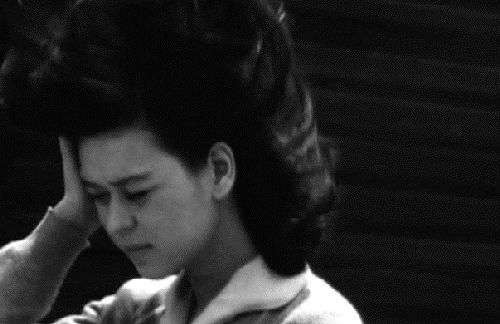



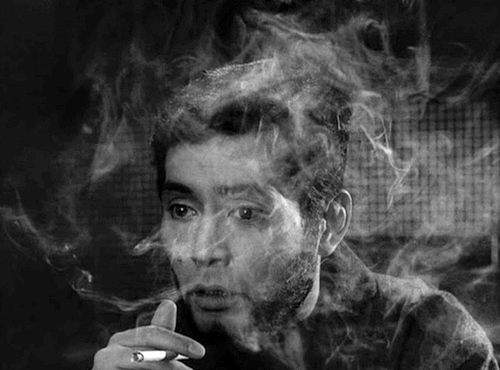
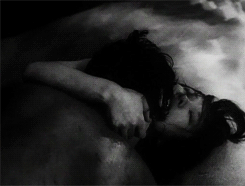
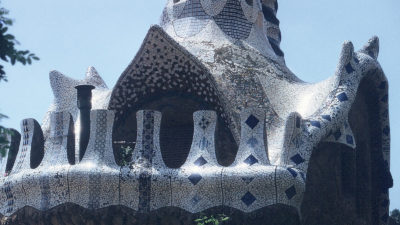
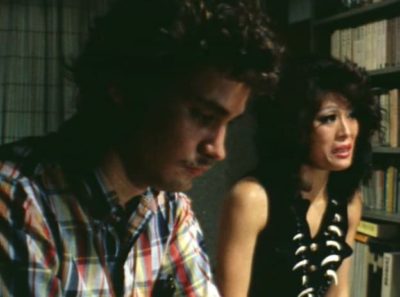
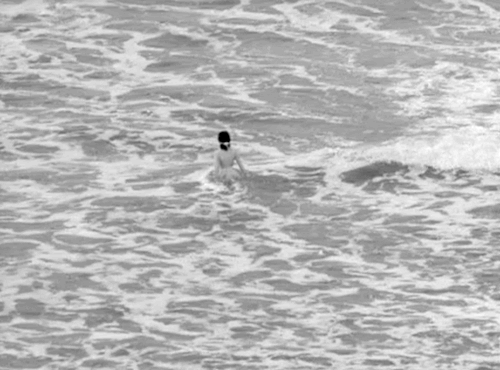

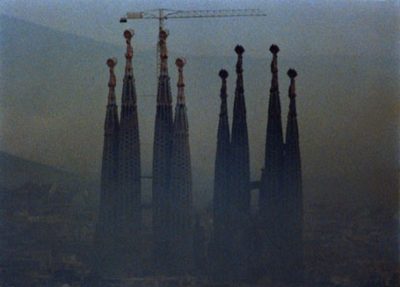

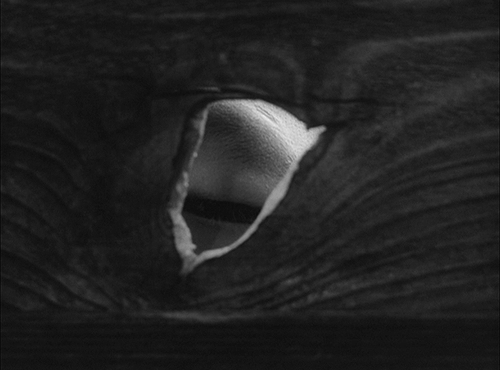
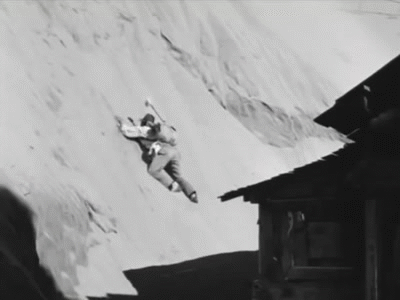
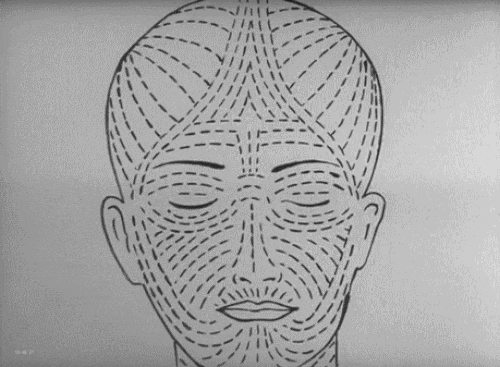
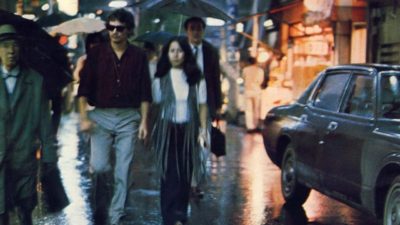
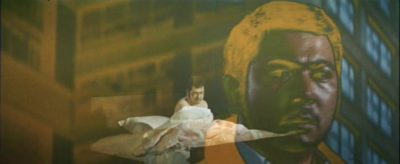
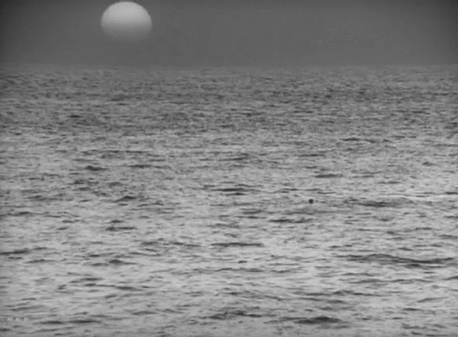
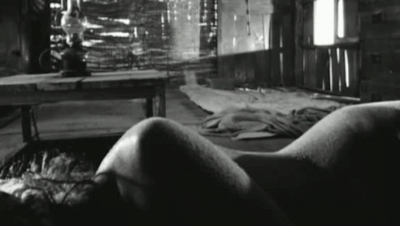
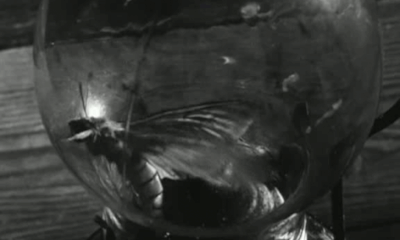



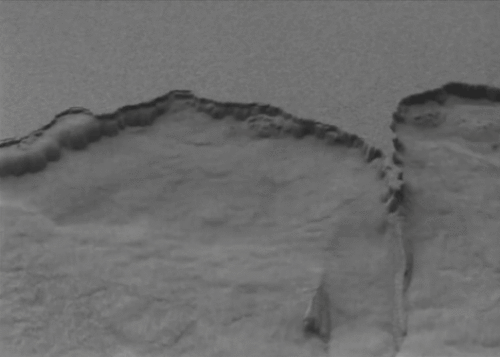
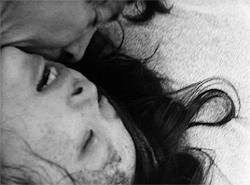


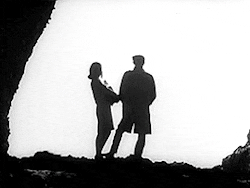
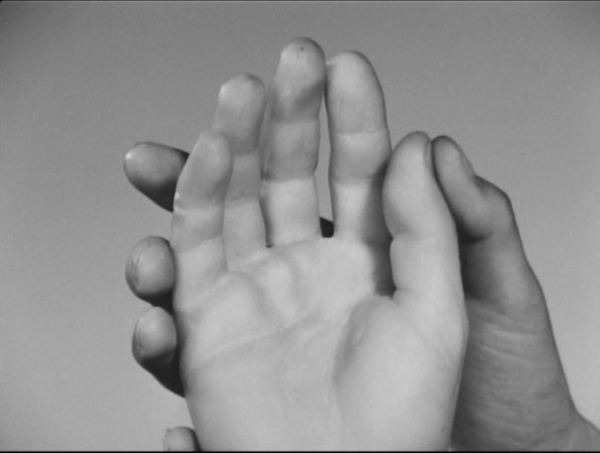
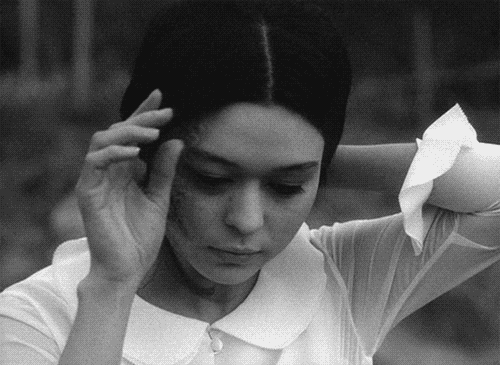


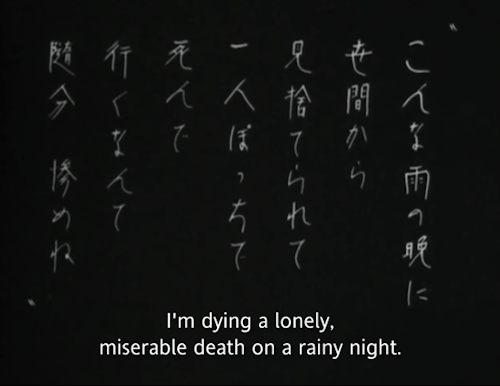
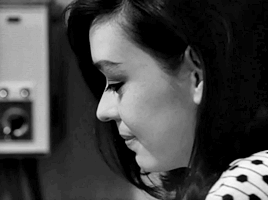

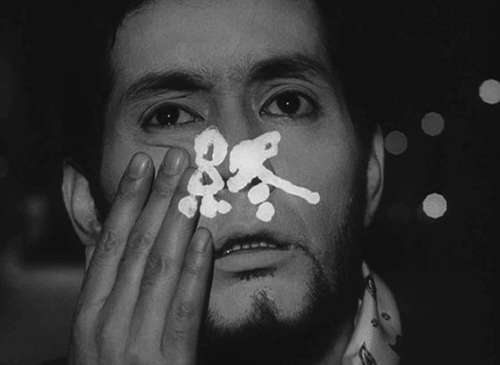

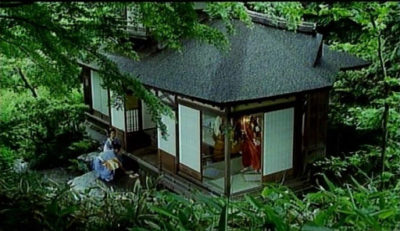
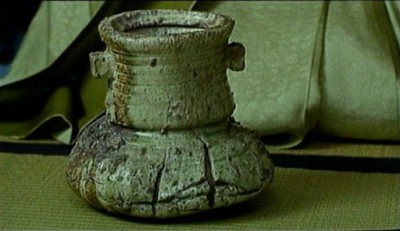


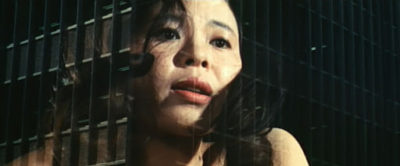
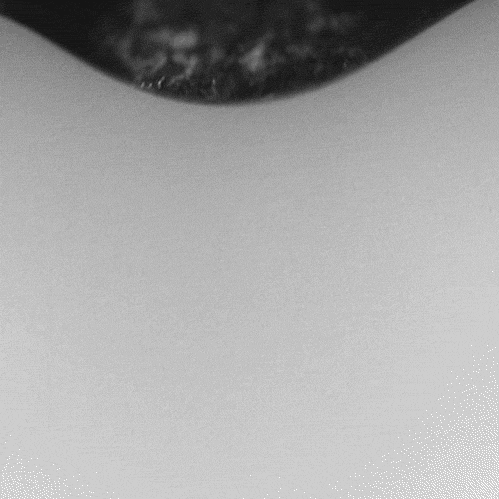
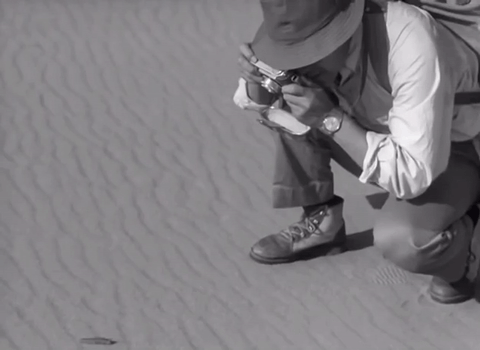
____
Further
Hiroshi Teshigahara @ IMDb
Hiroshi Teshigahara @ MUBI
Obituary: Hiroshi Teshigahara
hiroshiteshigaharafilm @ instagram
Arata Isozaki on Hiroshi Teshigahara
Teshigahara, Abe and Takemitsu: A Unique Collaboration in 1960s Japanese Cinema
The Word and The Image: Collaborations between Abe Kôbô and Teshigahara Hiroshi
Hiroshi Teshigahara @ Letterboxd
DVD: The Supplements to Three Films by Hiroshi Teshigahara
Transposition of the Scientific Elements in Hiroshi Teshigahara’s Adaptation of Kobo Abe’s the Face of Another
Ikebana As an Installation in the Art of Sôfû Teshigahara and Hiroshi Teshigahara
Eastern Premise #83 — The Woman In The Dunes
How Tōru Takemitsu and Hiroshi Teshigahara Explored Japan’s Postwar Psyche
Zola Jesus on… the Transportive Wormholes of Hiroshi Teshigahara
Hiroshi Teshigahara’s Multimedia Tradition
A Sisyphus in the Sand
Hiroshi Teshigahara as Renaissance Man
___
Extras
An Interview With Hiroshi Teshigahara
HIROSHI TESHIGAHARA FILMS in the Criterion Collection
Jose Torres (1959)
Teshigahara and Abe
____
Ichibana

Hiroshi Teshigahara(The 3rd Iemoto 1927 – 2001)
‘Hiroshi Teshigahara, the first son of Sofu Teshigahara who was the founder of Sogetsu School, was born in Tokyo in 1927. He is well-known world wide as the director of such films as Suna no Onna (Woman in the Dunes) written by Kobo Abe and Rikyu. In 1980, he became the third Iemoto of Sogetsu School. Since then, he demonstrated his originality using bamboo at his large-scale solo exhibitions at such famous museums as National Museum of Contemporary Art in Seoul, Korea (1989), Palazzo Reale in Milan, Italy (1995) and the Kennedy Center in New York (1996).
‘Domestically, he held solo exhibitions and displayed installations nationwide, including GEN-ICHIRO INOKUMA Museum of Contemporary Art in Marugame and Hiroshima City Museum of Contemporary Art. His works were acclaimed as an unprecedented extension of art beyond the boundary of Ikebana.
‘Both domestically and abroad, he undertook stage and art direction of such performances as the opera Turandot (Lyon, France, 1992; Geneva, Switzerland, 1996), an original Noh play Susanoh (the Avignon Theatre Festival, 1994), Sloka by Chandralekha Dance Company (1999), an original outdoor dance play Susano Iden (1991). His stage art of which the main component was bamboo and his stage direction itself were enthusiastically received.
‘Moreover, he demonstrated his unique talent for ceramic art and calligraphy, and continued to develop his creativity in various fields of art throughout his later years. In the 1990’s, he expanded the range of Ikebana by advocating Renka which is a series of impromptu Ikebana arranged by multiple artists.’
Works
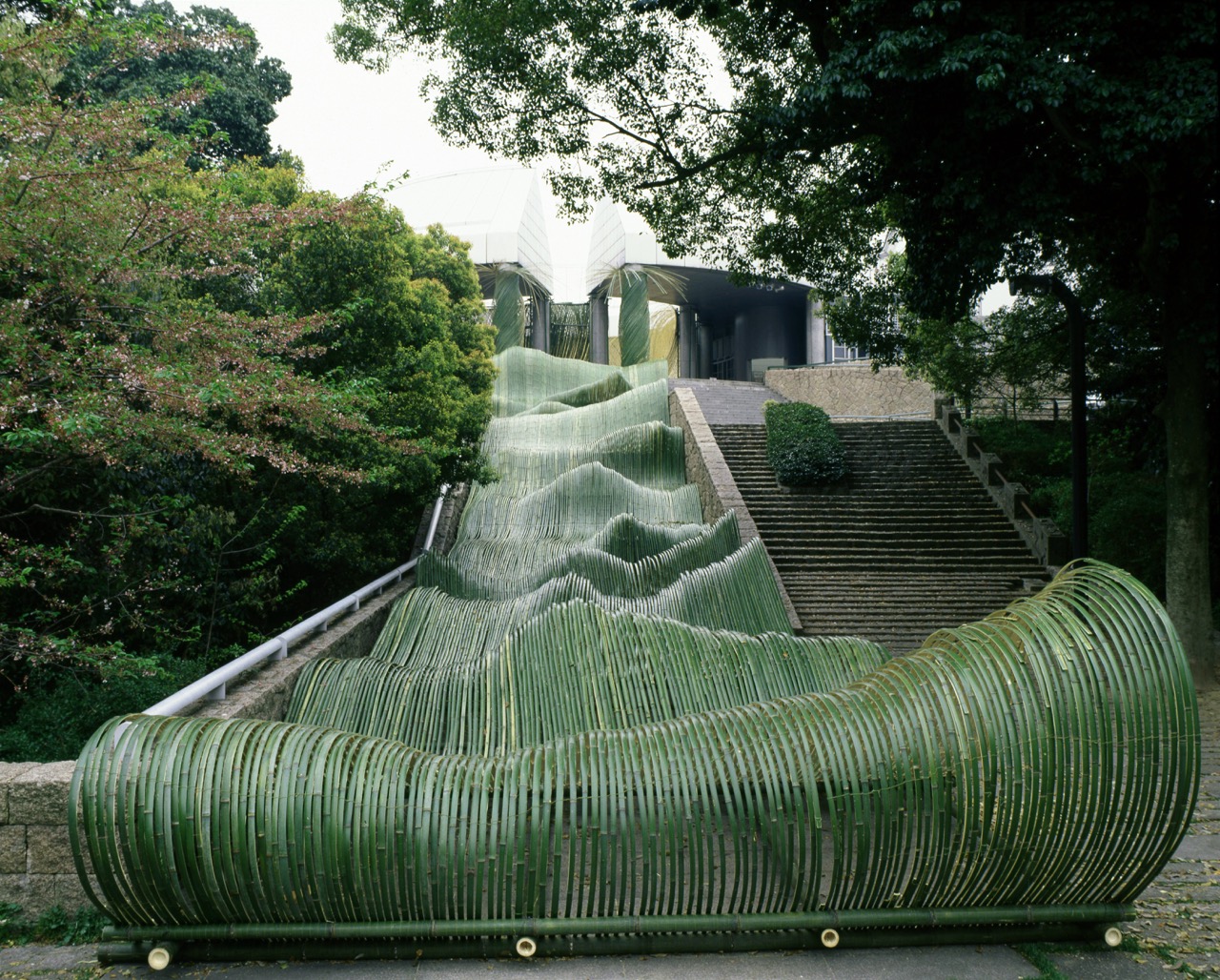
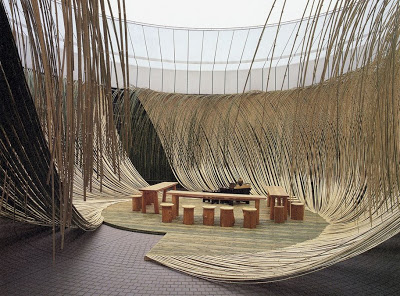


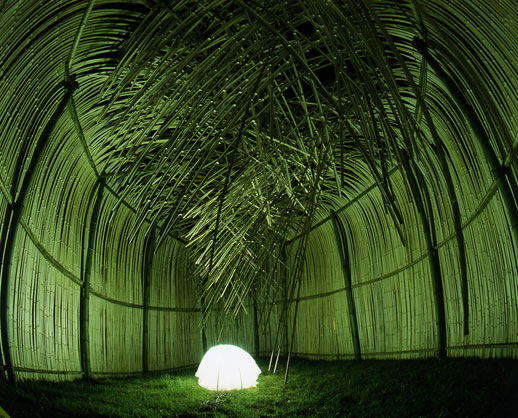
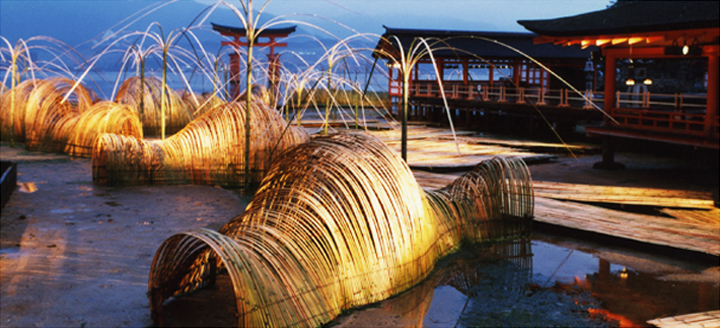
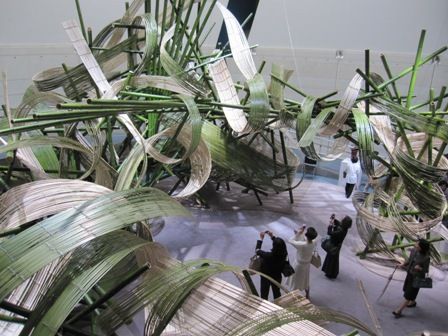
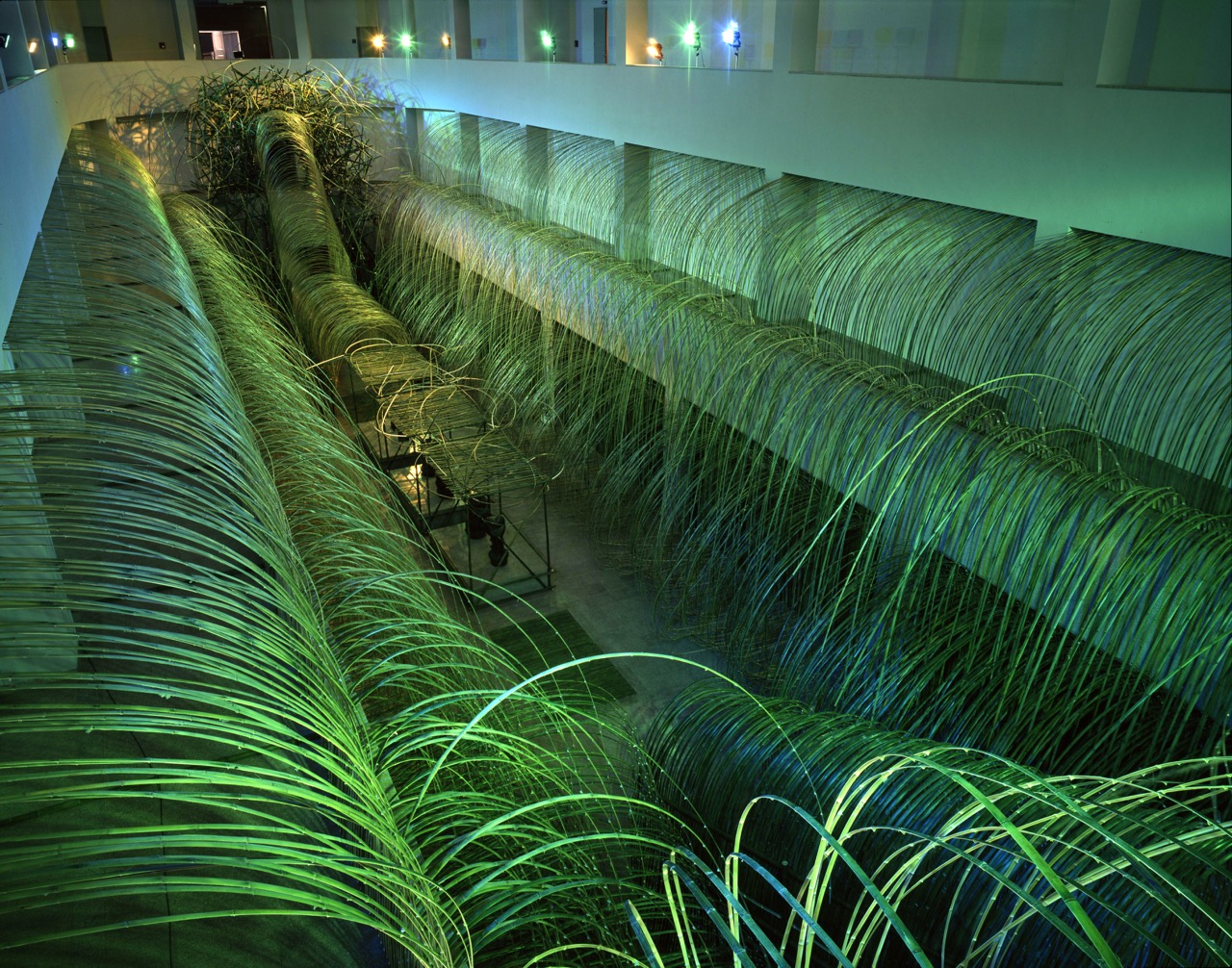
___________
12 of Hiroshi Teshigahara’s 21 films
___________
Hokusai (1953)
‘This look at the work and life of block-print artist Katsushika Hokusai (1740-1849) begins with the political context of the Edo shogunate at the time of his birth: peasants driven off their land come to the city; a merchant class is emerging; samurais’ power wanes. Hokusai lives in poverty, apprenticed as a printmaker, studying under the best artists of the day, especially Korin. Hokusai’s unique style strives for realism. The camera slowly pans Hokusai’s art: we see prints popular with merchants and commoners, particularly his caricatures; his subjects are often people at work. Late in life, political turmoil becomes his subject.’ — Letterboxd
the entirety
____________
Ikebana (1956)
‘A much different work than the previous documentary short on Hokusai, the first huge distinction is something that none of any of the films I’ve seen by Teshigahara have: color! Yes, no more black and white, but vibrant color for the Japanese auteur. Yet a major similarity is the choice to stick to art as what is profiled, this time in a little over a half hour.
‘Ikebana is a centuries-old style and technique of flower arrangement, growing, and decor of Japan, also known as “Kadō.” In this film, we learn about the artists and commoners who learn or revere the floral practice, in particular those from the Sogetsu School. It’s no coincidence that Teshigahara’s father, Sofu, was the school’s grand master. Like the stone gardens and other architectural styles of Japan, ikebana uses strict rules and order which still also allow a freedom of interpretation and artform.
‘Teshigahara briefly traces the major elements of the style, and segues to how it’s adapted to the modern industrialized world of Japan. There’s a clear focus on how women have taken charge in recent times of the art, whether amateurs or students, or revered professionals. We watch dozens of them carefully making beautiful arrangements. There’s a sharp turn to the surreal in the second half of the short, certainly the most memorable and elusive part.’ — Andrew Chrzanowski
the entirety
_________
Tokyo 1958 (1958)
‘Eight filmmakers collaborate with Teshigahara to bring a newsreel-style snapshot of Tokyo in 1957-58, when it had eight and a half million people and was the largest city in the world. The industry of the people is evident, with Katsushika Hokusai’s woodcuts interspersed with shots of contemporary workers. We watch women give a makeup demonstration, we visit bridal stores, and we see a young woman win a rock and roll singing contest and follow her home with her prizes; we go to the Ginza on Christmas Eve, with bars and nightclubs full tilt, and we join the throng at the Meiji shrine on New Year’s Day. Some surreal touches add comedy to underscore Tokyo’s energy and life.’ — David Surman
the entirety
_______________
The Pitfall (1962)
‘Teshigahara’s debut feature, The Pitfall [Otoshiana], was the first of his collaborations with novelist/playwright Kôbô Abe and composer Toru Takemitsu. Beautifully filmed in an abandoned, postwar coal-mining town in Western Japan, it is part social-realist critique, part unsettling ghost fable. Examining themes of alienation, workers’ rights, and identity, Teshigahara and Abe’s exotically strange film evokes the cinema of Antonioni, Resnais, the writing of Kafka, Beckett, Carroll, and the French existentialists. A wandering miner, looking for work with his young son, is pursued by a mysterious, silent assassin in a white suit and hat. As mistrust and killings spread through the barely populated, rundown mining community, ghosts of the dead appear, unheard by the living, yet imploring them for answers. Who is the man in white and why does he sow confusion? Teshigahara coined the term “documentary fantasy” for this study of the powerless, impoverished worker in postwar Japan.’ — Art Theatre Guild
Trailer
the entirety
Video Essay by James Quandt
______________
Woman in the Dunes (1964)
‘Hiroshi Teshigahara may have never quite become a household name, but this uniquely talented Japanese filmmaker, who specialized in existential dramas peppered with surreal avant-garde touches, received a large dose of international acclaim for his 1964 Woman in the Dunes. A strikingly photographed, Kafkaesque tale about a traveling amateur entomologist, Junpei (Hiroshima mon amour’s Eiji Okada), trapped like a bug by a widow (Kyoko Kishida) who lives at the bottom of a sand dune, Woman in the Dunes was such an art-house hit in the United States that Teshigahara earned a best director Oscar nomination—competing with such English-language cinema legends as David Lean, Robert Wise, John Schlesinger, and William Wyler. It combines a challenging use of impressionistic visuals and confined spaces with surprisingly accessible storytelling, and it brought Teshigahara’s visionary craftsmanship to a wider audience.
‘Woman in the Dunes is a film of ominousness and sensuous beauty, playing as both psychological thriller and askew romantic drama. Teshigahara shot the film with all the grace, tactility, and geometric precision one would expect of a director who was as devoted to the delicate art of ikebana (flower arrangement) as he was to cinema. Watch the following clip, in which Junpei realizes that escape from this mysterious woman’s home may not easy, to get a sense of Teshigahara’s striking gift for composition.’ — The Criterion Collection
Trailer
Excerpt
Woman in the Dunes – Hiroshi Teshigahara, Texture and Sensation
________
Ako (1965)
‘This short film from 1965 paints a portrait of Ako, a 16-year-old girl who is trying to live in freedom while escaping the traditions of her country. Ako works at a bakery where others like her manipulate masses of dough while engaging in conversation and laughing. Filmed in a disjointed style, the images and dialogue are reminiscent of a dream.’ — onf.tv
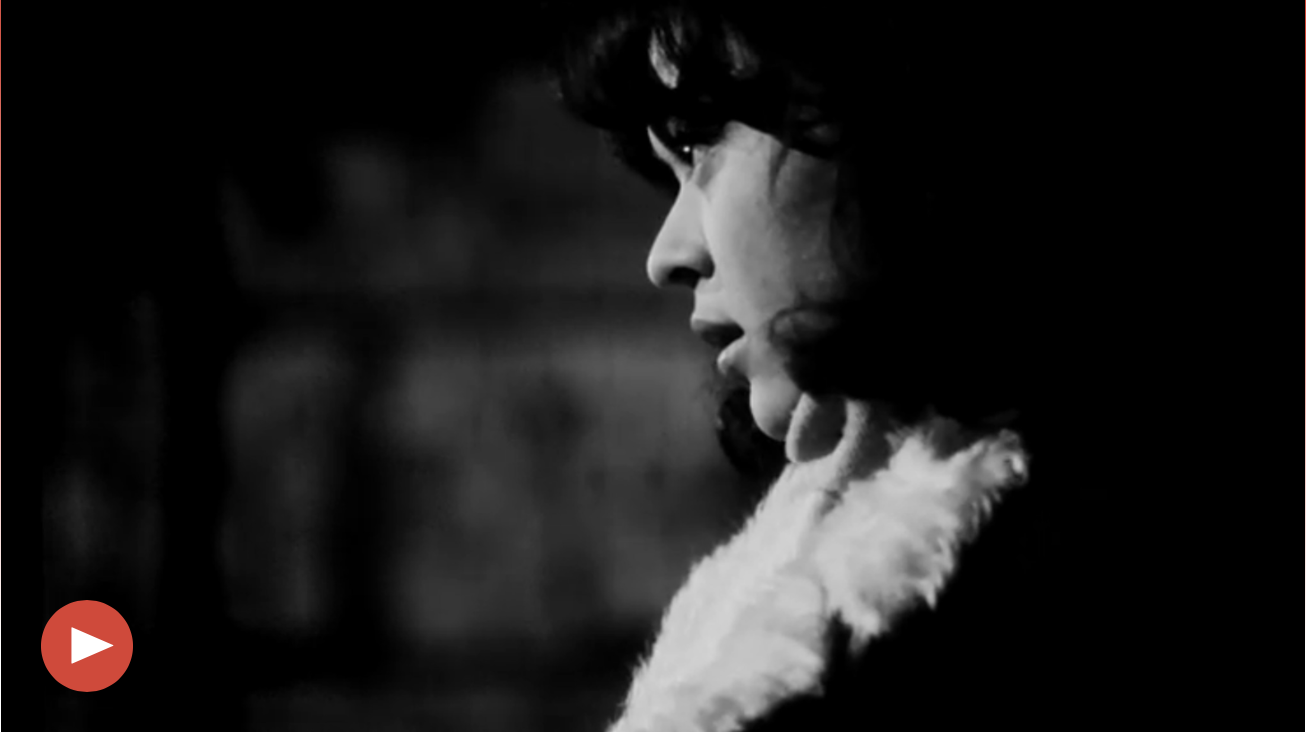
______________
The Face of Another (1966)
‘While a success in Japan, The Face of Another was largely dismissed by Western critics at the time of its release, perhaps for its modernist style, which was becoming increasingly unfashionable, its “extravagantly chic . . . abstruse exploration of psychological symbolism” (Noël Burch)—a backlash that would also make Bergman and Antonioni figures of derision. The film remains little known today, even as the recent face transplant of a woman in France and international debate over the wearing of the niqab make its philosophical deliberations so timely. (The film presciently incorporates, from Abe’s novel, a remark about Arab women’s protective veils in the wife’s consideration of the power of concealing the face.)
‘The catalog of doubles and echoes extends much further, but suffice it to say that the most important twinning in the film is that of the main and secondary narratives, of Okuyama and his new face and the Nagasaki victim and her forever scarred one. Relegated to a short coda in the novel, the second story is so boldly and insistently interpolated into the Okuyama narrative in the film that it becomes more than mere counterpoint. One could contrast the two stories, their settings (which extends to the meteorological, one summery, the other winterish) and protagonists (one innocent and altruistic, the other cynical and solipsistic), but the importance the film assigns the second narrative suggests that Teshigahara is searching for a way to intensify his critique of Okuyama, whose fetid stream of consciousness in the novel suffices as damning commentary. It should also be noted, given the previous discussion of aspect ratio in the film, that Teshigahara first introduces the image of the girl (in ways reminiscent of an Imamura heroine) in letterboxed widescreen, before reverting to full frame, perhaps to signal that her story is the film that Okuyama tells his wife about. (Its status is less ambiguous in the novel, where it is clear that the second narrative is a film called One Kind of Love.)’ — James Quandt
Trailer
the entirety
______________
The Man Without a Map (1968)
‘The film begins with a surreal sequence in bright, popping psychedelic colors, an amoebic kaleidoscope of sorts with various strains of music—rock, classical, radio static—fading in and out over the credits. These visuals dissolve into aerial cityscape views of Tokyo, with a woman’s voice describing “the little activities of a thousand souls.” Many shots are framed in a low-slung way that cuts off the heads and sides of the subjects speaking, or from odd angles though windows or doorways that give the impression that our detective is constantly being watched by someone unseen. As the detective’s search becomes increasingly fruitless the framing wanders farther and farther away from the action, at times no longer focusing on who’s speaking, as if even the film itself has become bored with the story.
‘Strange hallucinations begin to crowd in on our detective, daydreams that take him out of his pursuit and become inseparable with his reality. After he’s fired from the agency (impersonally, over the phone), and the nature of his relationship with the missing man’s wife becomes more intimate, the reality of the movie dissolves and the detective’s altered mindset becomes the dominant landscape of the film. In deciding whether to engage in a new narrative and begin a new life or withdraw from the scene entirely, he muses, “I will disappear too.”
‘The film’s aloof and deadpan attitude would make one want to associate it with other grim detective films of the subsequent decade like Hickey & Boggs (1972) and The Long Goodbye (1973). But Man Without a Map rejects any efforts to play upon the curdled nostalgia of Chandler-era gumshoes and instead achieves a wholly contemporary ennui that’s surreal and sincere. While the story may be purposefully dull its effect is compelling and revelatory. In playing upon our familiarity with the detective genre Abe and Teshigahara are prodding at our notions of existence, ambition, and legacy in a way that provides no answers but leaves a big, colorful mess in its wake.’ — Sleeping All Day
Trailer
Excerpt
_______________
Sculpture Mouvante – Jean Tinguely (1981)
Documentary about Jean Tinguely and his work.
the entirety
______________
Antonio Gaudí (1984)
‘Catalan architect Antoni Gaudí (1852–1926) designed some of the world’s most astonishing buildings, interiors, and parks; Japanese director Hiroshi Teshigahara constructed some of the most aesthetically audacious films ever made. In Antonio Gaudí, their artistry melds in a unique, enthralling cinematic experience. Less a documentary than a visual poem, Teshigahara’s film takes viewers on a tour of Gaudí’s truly spectacular architecture, including his massive, still-unfinished masterpiece, the Sagrada Família basilica in Barcelona. With camera work as bold and sensual as the curves of his subject’s organic structures, Teshigahara immortalizes Gaudí on film.’ — The Criterion Collection
the entirety
__________
Rikyu (1989)
‘The great Hiroshi Teshigahara’s second last film, released in 1989, is an insular, ponderous affair, albeit one with flashes of subtle beauty and brilliance. A relatively direct historical drama concerned with the relationship between a warlord and a tea-master, Rikyu lacks the oblique visual metaphors and universal themes of human desire and fear that made earlier works, like Woman in the Dunes, so impactful. That’s not to say that this meditation on the contentious relationship between politics and art isn’t an effective piece in its own right; it most certainly is. But, for outsiders more drawn in by emotional storytelling than history lessons, it’s a bit of a tough slog.’ — Scott A. Gray
Trailer
____________
Gô-hime (1992)
‘Hiroshi Teshigahara’s films from the 60s are frenetic, high energy, fast paced, creative, photographed in b & w (with one exception), and focus so greatly on the loss of identity (a huge trademark of the Japanese New Wave). The final two films of his career, Rikyu & Gô-hime, are slowly paced, deliberate, calculated, disciplined, refined, filmed in color, and have characters who thoroughly understand who they are. The evolution of going from these 60s pieces to the 80s ones, is not a conventional one (although there are probably plenty of examples of artists becoming more disciplined and refined as they get older). For HT, the journey came from his father’s calling and eventually his own to the art form of Ikebana (flower arrangement). This pursuit of Ikebana fortunately honed his skills and turned him into a master. In other words, our own version of the character of Rikyu; a man of his time, of his art; dedicating his life in full. Fortunately for HT it just so happens his mastery and understanding of Ikebana carries over so well to film–in particular the arrangement of what lies in frame. The man had an eye like no other.
‘The most impressive thing to me is the calculated layout and geometry of his camera work and photography; a man’s head clearly reflecting off a gloss table (what he had utilized to massive effect in The Man Without A Map), a gardener in silhouette between two columns, hooves of horses trotting in tow, a man yelling in frustration in a cave, a winter forest, a summer meadow, a grove of cherry blossoms, how a particular prop is placed, the preciseness of having us focus on someone’s hand or foot… I really could go on. Everything in frame are his brushstrokes, the entire film his painting. Not too much color, not too little. Not lingering too long on someone’s face, and allowing a character to stand up (while talking) to suddenly not see his face. The fluidity and rigidity of the character’s movements. Knowing, caring and understanding the Way of Tea. It sounds like a ton (well cause it is) but you could very well miss it all if you just took this film at face value and strictly paid attention to the two plots that carry on throughout. In fact, much of what we see is so subtle you’d have to know what you’re looking for but that doesn’t, in the very least, not allow one to feel the meditative and reflective states one can draw from Rikyu or Gô-hime, or see the ever-present geometry in every frame. To even not notice the innate beauty of Japan’s geography and culture, would be very shortsighted to anyone who watches these films.’ — Ziglet_mir
Trailer
the entirety
*
p.s. Hey. ** prince of darkness?, Ha ha, hi. You can delete the question mark. Thank you, or, rather, thank the ghost who may or may not still be vomiting. Enjoy the seaside. Boy, that sounds nice, although almost anything that’s not in Paris sounds nice to me these days. Hope you get the exact amount of sun you wish for. And I’ll try to make my weekend count somehow. xo ** Misanthrope, I do like the mental image of a sporty Rigby even if the image is elusive. I’m excited too! ** Bill, Hey. Wow, that old. Yeah, I think there are maybe two or possibly three d.l.s from DC’s dawn who are still hanging in here. I remember us meeting at SPEW first too, but … Wow, was that LACE show called Skid Row Slashers? How the hell did that terrible title happen? Yeah, I curated and hosted that event. It was fun but calamity-filled. One of the performers who crucified himself while covered with red ants had to be rushed to the hospital after he came offstage, and the band that closed the show, Imperial Butt Wizards, assaulted the audience in some way or another that I don’t remember that was sufficiently ugly that it almost got me kicked off the curatorial committee. Weirder times. ** Jamie, Hi, pal. Fuck that indeed. Who needs that shit. Oh, man, so sorry you were/are under the weather to that degree, but happy it wasn’t a trendy Covid thing at least. I’m alright. Been better, been worse, you know how it is. Yes, everything is about next Wednesday at the moment. Meeting anyone for a drink that doesn’t involve take out coffee and sitting in a park or on a bus bench sounds way wild to me. Go nuts. I hope your day puts the love in lovely. xoxo, me. ** Dominik, Hi!!! Yes, it seemed sad to leave that post dead and erased from existence. I’m not normal, but the dizzy thing is less full-time, which I’ll take. My love got a little carried away by my dark ride facade fondness yesterday, but … c’est la vie. You’d be amazed, or probably not, by how many diaper slaves I have to weed through every month, and their profile texts are almost always so goo-goo-gaa-gaa icky. However, your love sounds very discrete about his diaper, which I greatly appreciate. To give you a very early preview of June’s slave post-in-progress, love that “want[s] to be Ur and ur dog’s daily full service toilet. Can that be my only sustenance? maybe some vitamens. like seriously can U turn off the water to all the toilets in the house?”, G.** Steve Erickson, I can imagine the benefit from taking LSD if I was on my deathbed. I mean, what do you have to lose at that point. I’m glad your awful day was eclipsed by a productive and okay one. Hope that trajectory is the trend. Everyone, Here’s Steve:’My review of the lame thriller PROFILE, now getting a theatrical release in the US because of pandemic cinema scarcity, was published today.’ I highly recommend ‘Sisters with Transistors’, if you haven’t seen it. I’m not sure when the Wake Island episode will air. I guess he’ll tell me on Sunday. ** David Ehrenstein, Those quotes are so, so you. ** Gus Cali Girls, Hey, Gus! Yes, I went into a California Girls wormhole recently and very happily, need I add. Oh, wow, you saw that Jess Johnson and Simon Ward piece. Very cool. Maybe it’ll get up here, or that’s a hope. I’m okay, and, yes, will be more than okay next Wednesday when Paris becomes more than a pretty, impenetrable facade again. And you can bet my eyes are on the French amusement park restart updates. Mid-June, it seems. You know me so well. I hope your world is all open-armed and inviting and of that good stuff. How are you? Are you working on anything? Take care, and thank you so much for that much appreciated wormhole! ** Jack Skelley, They should make me a state. Lord knows I’m in a state. Nice Roky quote, man. I can tell from way over here that Friday has your name on it, so luxuriate accordingly. Love, me. ** Okay. My feast for your senses today involves the films of Hiroshi Teshigahara, best known out west for his classic ‘Woman in the Dunes’ but with much more great stuff up his art’s sleeve, as I hope you will discover. See you tomorrow.




 Now available in North America
Now available in North America 
This post functions as a good appetiser for the boy post tomorrow; my brother & I were obsessed with Woman in the Dunes a few years ago. I have no idea why I didn’t watch anything else by Hiroshi Teshigahara. Do you have a specific recommendation? Go-hime looks particularly interesting. Oh, I don’t think I’ll get any sun at the seaside – I already know it’s going to be cold… But like you said it’s just nice not to be stuck in the city… At this point, ANY adventure is good adventure haha. I really hope you’ll get some, too. (exciting adventure emoji)
Hi!!
I keep sending you all kinds of non-creepy healing energies from over here, but I’m glad to hear that the dizziness is getting better, even if it doesn’t seem to be in a hurry to disappear.
Haha, yeah, I was pretty certain that you meet your fair share of diaper slaves while working on the monthly posts. I’ve never, however, run into anyone who wanted to be someone’s dog’s toilet, too. I’ll give your love some vitamens to keep him healthy while he’s doing us such a service. Thank you! Love popping up in your living room to present you with a live performance of Nirvana’s “Beans,” Od.
Dennis, I hope you have a swell weekend. I’ll be hanging with friends tomorrow night, either in Annapolis or Port Republic, MD. Frankly hope it’s the latter, but I’m waiting on word for what they want to do.
I’m reading Europe After the Rain now. Think it’s gonna take me a while to get into it, hahaha. It’s quite spare and cryptic. I don’t dislike it, I’m just having a time figuring out what’s going on. Seems a guy is transporting a woman and made her take a bath so far. Hmm.
This is the last book I bought in my last big Amazon order. I’ve got to place another and secure a pre-order of I Wished. I have $125 in gift cards from there, so might as well get on it. Also want to get Diarmuid’s Wrong too. And some others I’ve written down.
Teshigahara’s world of Ikebana is pretty intense. The family “school” is still on and doing work. Japanese artists working in Japan has intense relationship with their craft and would be interesting to study if there is a connenction between ikebana and cinema. At least through the eyes of Teshigahara.
I only know and enjoyed Teshigahara’s first two Abe film adaptations. Didn’t know he’s a multi-talented fellow, wow.
Your LACE event was actually ’91, not ’92. I didn’t remember the title exactly, but here it is, haha:
https://welcometolace.org/lace/rough-cuts-skid-row-slashers/
I was in the audience and not aware of the hospitalization. I can post some excerpts of the review if you’re interested. There’s certainly no details on the LACE site.
Bill
Nice Teshigahara fest here! Now that I’m free of the cursed NHS Wi-Fi, I can properly view the YouTube and Vimeo clips this weekend. Looking forward to it.
Yes here I am home at last, after my 3 month hospital stay finally came to an end yesterday. That 1st Covid jab triggered an MS relapse and I’ve been trying to build myself back up ever since. Here is a pic of me getting a taxi here yesterday. I’m still happy to get the 2nd jab whenever that might be.
“Woman in the Dunes” and “The Face of Another” are classics. This weekend TCM is featuring his great “Antonio Gaudi” documentary.
Here’s a link to a piece about a new exhibition of photographs of Cherry Grove in its 1950s heyday.
Hello again, Dennis,
What a way to close off a phenomenal week of posts on DC’s: a beautiful tribute to surely one of the most interesting and iconoclastic cinematic artists of the twentieth century, a filmmaker I can easily get behind even having seen only one of his films (yes, it’s “Woman in the Dunes”). The catalogue you’ve so helpfully assembled is composed entirely of intriguing entires, but I think I’ll have to head to “The Face of Another” first. (“Gô-hime” also looks remarkable.) Wonderful, wonderful stuff. A real relief to close off what’s been a difficult week. My last week of classes for the semester and I’m swamped with finals, but hey, it’s wrapping up. And last week I got dose two of the vaccine—it gave me chills and a fever for a night and then I was fine, and now on Sunday I’ll have the full protection. I’m celebrating by going to a movie for the first time in ages. So it’s been wild ups and downs, but mostly ups, despite the workload. Sorry for dumping all of that in your comment section; it’s just been a while since I spoke to you and I’m eager to share, lol. How have you been? What’s happening in Paris? Any interesting books or movies or art or otherwise interesting things? I hope so, or if not, at least that your weekend has the starriest of prospects. Cheers.
Fantastic Teshigahara day, Dennis! I love the images you’ve put together. I haven’t seen a lot of these too except the well-known ones. And every time I see something about Tokyo or Japan (like that 50s clip) I’m off on another wormhole for my J-novel… I hope things are okay with you and everyone over Paris way. Been meaning to check in for a while. This year speeding along. We’ve still got this niggling Olympics situation hovering over everything. Also like three minor earthquakes … But otherwise things good with writing and everything.
Great to witness the return of the Vomitingghosts! I remember many excellent ghost posts!
Speaking of old times, did you see the new BBC mini series about Charles Sobhraj (The Serpent). Reminds me he made an appearance in that old fake profile/comments day.
Misanthrope, what’s this Rigby nature hiking apparition? Say hi and pass on my love to the great man!